The Last House on the Left (1972)
Directed by: Wes Craven
Written by: Wes Craven
Starring: David Hess, Fred J. Lincoln, Lucy Grantham, Sandra Peabody
USA
AKA KRUG AND COMPANY
AVAILABLE ON DUAL FORMAT BLU-RAY AND DVD from ARROW VIDEO
RUNNING TIME: 84 mins
REVIEWED BY: Dr Lenera, Official HCF Critic
Against the wishes of her parents, Mari Collingwood sets off for a concert with her friend, Phyllis Stone on her 17th birthday. On the way, they hear a news report on the car radio of a recent prison escape involving criminals Krug Stillo, a sadistic rapist and serial killer; his heroin-addicted son, Junior; Sadie, a promiscuous psychopath and sadist; and Fred “Weasel” Podowski, a child molester, peeping Tom, and murderer. Before the concert, Mari and Phyllis encounter Junior when trying to buy marijuana. He leads them to an apartment where they are trapped by the criminals….
A good argument could be made for Wes Craven being a filmmaker who re-defined the horror movie in not just one decade but three. And yet, despite the fine work he subsequently put out which only occasionally dipped to a low standard, I personally still don’t think he ever quite matched his first film in the genre The Last House On The Left, even though it’s a film that, due to being so grueling, I’ve watched far less often than some of his others. Later stuff was undeniably technically superior – in fact The Last House On The Left is pretty rough around the edges – while certainly two and possibly even three of his later offerings remain more iconic. It doesn’t even rely that much on conventional scares, but this film is still so frightening because of its escalating sense of panic, its depiction of evil, and its believability. Craven’s response to the way screen violence tended to be quick and cut away from, and reaction to the turmoils that were engulfing America at the time particularly it seems Charles Manson, still manages to be so much of its time, yet almost as important now. Yes, it’s sometimes hard to watch, but that’s the point.
It was actually inspired by Ingmar Bergman’s The Virgin Spring, which itself based on the Swedish ballad Töres döttrar i Wänge. Producer Sean S. Cunningham had previously made two soft porn films and Craven had synchronised dailies on the second one. The company that produced it Hallmark Releasing then gave them $90,000 to shoot a horror film, which was initially intended to also be a hardcore porn movie. The majority of the cast of were inexperienced or first-time actors. It was shot in New York City, Long Island and in and around Cunningham’s house just outside Westport, Connecticut. Often the crew filmed guerilla-style before being forced to leave due to lack of permits. Initially called Night Of Vengeance, the titles Krug And Company and Sex Crime Of The Century were tested before The Last House On The Left seemed to be the most popular. The film was passed by the MPAA after neck carving, stabbing and entrail pulling were cut, but differing versions with alternate scenes also circulated while local censors and even projectionists would sometimes make their own cuts. Cast members were sometimes verbally abused on the street. In the UK it was refused a certificate, then briefly released on video before being branded a video nasty. The BBFC refused to allow a DVD release twice, then let it come out but only with 31 seconds of cuts despite distributors Blue Underground appealing. The idiocy of the BBFC’s attitude was highlighted when not only was the cut footage viewable as a slideshow extra on the disc, there was also a link to a website where it could be seen. The uncut version was finally passed in the UK in 2008.
Opening text fraudulently claims that the events we’re about are real except for the names having been changed, though of course in this case said events could very well have happened and could indeed be happening now. The tone is reasonably light for a while, though with some clever foreshadowing. Our two teenage girls want to go and see a band called Blood Lust who once dismembered a chicken on stage. “All that bloody violence, I thought you were supposed to be the love generation” says Mari’s mum. This could be intended as a wry comment in the huge increase in on-screen brutality which followed the eruption of the counter culture movement, but maybe it also suggests that, with all the free love, drug taking and what not, these people – which of course include Mari and Phyllis – are unintentionally meddling with dark forces which will rebound on them. Here, these forces are Krug and Junior Stillo, Sadie, and Fred “Weasel” Podowski, as horribly convincing a group of cruel, sick human beings as you can imagine. The performances by David Hess [Krug, whom Craven has burst a child’s balloon with a cigarette a la Strangers On A Train’s Bruno son after he first appears to show his cruelty] and Fred Lincoln [Weasel] are especially effective; naturalistic and restrained yet making you terrified of them in every scene that they’re in. It’s Sadie, demanding equal representation for females in the group which leads to the kidnapping of the two girls, something which is then inter-cut with Mari’s parents preparing for her 17th birthday party, an easy and obvious but still effective way to ram home the horror of the situation.
The first rape is not shown at all, a zoom into the watching Mari’s face being enough. In fact, considering what these scum do to these girls, Craven holds back [Mari and Phyllis being forced to commit sexual acts on each other and some gut ripping were actually cut down just before release]. The mid-section is certainly hard to watch [that’s Hess’s real saliva in the second rape] and the rough, almost documentary style of the filmmaking – replete with some out of focus shots and frequent use of the zoom lens – makes things seem more real as does the harrowing acting of Sandra Peabody and Lucy Grantham. The way they sometimes look each other to try to provide some reassurance is especially heart breaking – though supposedly Peabody wasn’t always acting. She was terrified of David Hess who liked to stay in character, and peed in her pants for real for the scene where her character’s supposed to do just that, a bit which some get more upset by than – say- a name carved by blood into a neck because of the personal nature of it. But you don’t get the impression that we’re intended to enjoy all this, unlike say the Saw films where it seems we’re supposed to like watching people being tortured to death. Nor do you get the impression that things are being lingered on – though then again they probably didn’t have the money to show things such as knives going into bodies. The heroin-hooked Junior seems to have a conscience about what’s going on, if only he can see past his continual drug-caused haze. In fact after the two killings the whole group briefly seems to exhibit something approaching realisation at what they’ve done. However, you still have little sympathy for them when their car breaks down and they have to stay the night at Mari’s parents who, when they find out the truth, and after Craven’s first dream scene, set about wrecking vengeance which includes castration and some early chainsaw action. A few details here are silly, such as the ability to sneak into a house with a dead body without waking anyone up. Still, the lack of explicit detail in a way makes things worse – no grisly effects to cheer. And afterwards, all we get is a numb, empty feeling.
Cars breaking down is a sardonically employed motif. The family and police hunt for the missing girls unaware that the car they’re looking for has broken down right outside their house and that the girls are being tortured only a stone’s throw away. The cops ignore the very car they’re looking for and then their own car breaks down just as they realise that it was the right one. The goofy, ‘comic relief’ police have been much criticised for being out of place. In a way I’d agree, yet I often think it’s a good thing they’re there, otherwise the movie would be even more difficult to watch. I always laugh when they fall off a chicken farmer’s truck when it begins to move and at actor Marshall Anker’s camp gestures – though I don’t know if it’s good acting, it could be bad acting, while Martin Kove [yes, the same one in the Karate Kid films] barely seems to act at all. Perhaps more awkward – especially if you’re watching this for the first time – is the upbeat, even comical music that sometimes accompanies the exploits of Krug and company, though I don’t think that its employment is trying to make the proceedings seem a bit funny. Rather, it indicates to me what a lark this must all be to these crooks. Hess’s musical contributions do reassure the viewer a little that we’re watching fiction, but I can never get the catchy theme song for the killers out of my head, while The Road Goes Nowhere song that really acts as the main theme, is as despairing as you could wish for.
While still basically learning what he was doing, Craven is still already able to give us two heart-in-mouth-shocks, including one of the best and cruelest severed hand gags ever. He’s even able to use his minute budget to his advantage. The scene where the parents and the killers have dinner together has nothing but pitch black in the background because they had no money for a set, but because the scene is so odd anyway it adds to the surreal nature of it. And you do get the odd genuinely artful moment like Mari’s final few seconds seemingly evoking the famous painting Ophelia by John Everett Millais, and yet even here we’re not invited to view the death as having some beauty [violent death, especially of a woman, being a major motif of the horror genre whether we like it of not]in it. Rather, we just see it as ugly and horrible. The Last House On The Left inspired countless imitators, and I made a defence for I Spit In Your Grave in my review of that film, but I don’t think that any of its successors have matched its honesty [something which the remake seemed to have less of despite being pretty good in its own right], which in a way is quite surprising considering that Craven and Cunningham just set out to make something more shocking than the norm to make money.
Rating: 









I used to own an original UK video of The Last House On The Left, and it was a most prized possession, though like many videos it eventually became unwatchable. What a leap it is from the quality of that to this Blu-ray. Some flaws in the filming and the cheap stock it was obviously shot on mean that this film will never look brilliant, but the colours are vibrant and this version is far less softer than the DVD. Grain is occasionally a bit unevenly managed, but I’m sure that Arrow did the best they could with what they had.
The collection of special features is really impressive, collecting most of the extras from the previous Region 1 and Region 2 DVDs and adding a few new ones. After the rather tongue-in-cheek introduction to the film from Craven, first up is a The Legacy of The Last House On The Left, a typically analytical interview with Craven taken from the Region 1, who says “I think I wrote it more without thinking about it, rather than thinking about it”. He mentions being inspired by Vietnam documentaries, interestingly says how the torture porn wave was influenced by the news of the real-life torture going on in the news, and says good things about the remake even though you can tell he’s not sure about all the things it did. Next up is Celluloid Crime of the Century from the Region 2, an excellent 39 minute making of with Craven, Cunningham and most of the important cast members aside from Grantham and Peabody who are sadly absent. Starting with its porn movie background, it’s not just informative but allows for things like Lincoln to call the film “a piece of shit”, after which it cuts to Hess saying how Lincoln made lots of pornos,“how good is that for society”? We learn lots of interesting stuff, like how much was improvised, how Klove turned down the role of Krug but recommended Hess for the part, plus the nature of Hess’s audition. It even ends with a dig at the BBFC!
Scoring Last House from the Region 1 is 9 minutes with Hess including him even playing two of the songs. He’s lively if a tad un-PC company. It’s Only a Movie: The Making of Last House in the Left is the Region 1’s alternative making of featurette. It’s more restrained and skims over the porno aspect, but does have Granthan in place of Jeramie Rain [Sadie] and adds a few tidbits too. Forbidden Footage from the Region 1 has some of the cast and crew talk about the film’s nasty highlights for 7 minutes. Junior’s Story is a new featurette that has Marc Sheffler [Junior] chat about his experiences making the film for 16 minutes and talks a lot about the obviously larger-than-life figure that was Hess. He says how he previously made a porn movie in which he was the only one not naked and having sex, and how his character was the same way in the sex-filled first draft of The Last House On The Left. Blood and Guts interviews makeup artist Anne Paul for another new extra for 13 minutes and it’s interesting to hear her say how some effects were done and how she subtly differentiated the makeup for the bad and good characters. The Road Leads to Terror goes to the locations for 6 minutes, the Deleted Scene is actually an an alternate scene from the Krug And Company cut in which Mari is still alive when John and Estelle find her, and then it’s on to 25 minutes of outtakes. Though they lack any sound, they’re well worth sitting through because you get much cut footage including a much longer woods chase, the entrail ripping which goes on far too long and thereby loses his effect, and even the forced lesbian rape sequence which just seems sleazy in the worst way – but it’s great that we’re finally allowed to see it.
So….on to the audio commentaries. First up is a new one from film experts Bill Ackerman and Amanda Reyes. It spends rather too much time giving potted biographies of cast and crew, and both participants talk rather fast but Ackerman especially as he tries to cram in as much stuff as possible. However there’s also plenty of insight [great to hear a woman’s views on the film] and new information, from mentioning the way the film is so unsettling partly because we don’t always know what to feel, to telling us that the opening text was originally a quote from Yoko Ono. The old Region 1 commentary from Craven, who says Krug was based on his father, and Cunningham is next. Unsurprisingly, Craven is more thoughtful and has more to say, though Cunningham provides plenty of production details. Both gently mock the film on occasion. The gaps widen towards the end, but overall it’s a good if not great track. And finally on the first disc is the archival Region 2 track from Hess, Sheffer, and Lincoln which is very lively, in fact quite raucous and even foul mouthed. Lincoln and Hess go on about f***ing various girls during the filming, while Lincoln says they were hardly directed and points out when he looks at the screen to let the cameraman know when to move the camera. In fact Lincoln takes claim for some of the film’s best moments, such as when the killers try to wash away their sins in a filthy river. Unfortunately Hess becomes rather dislikable when he thinks it’s funny that he held Grantham over a cliff and threatened to let her go unless she played a scene properly. Overall great fun though.
Disc Two has two different cuts of the film: the ‘R’ rated version and the Krug And Company cut which in addition to the alternate scene described earlier has some other different bits and pieces, though they’re quite minor. The Craven Touch has Craven collaborators Cunningham, Peter Locke, Mark Irwin, Charles Bernstein, Amanda Wyss and Carly Feingold discuss for 16 minutes their memories of the late filmmaker. No criticisms of the man here, it’s all warm and fuzzy, but fans still recovering from his departure from this world [it’s still hard to believe that we live in a world without Craven, Tobe Hooper and George Romero] will love it nonetheless, and I must say that I’ve never heard that Craven wasn’t the nice, calm, intelligent guy described here. Early Days and Night of Vengeance has Roy Frumkes, who produced an unfinished horror anthology film that Craven part shot one portion of, talk about Craven and the impact of The Last House On The Left for 8 minutes, and this is followed by the 11 minutes, previously on the Region 2 DVD, that Craven filmed for the anthology. It has no sound, and looks very rough, but you can tell that it was one of Craven’s most stylishly shot pieces – though that may partly have been due to only three lights being available to him! As it stands, the story, jumping from the Old West to the present day as a gunfighter somehow becomes a kind of zombie, has no coherency whatsoever.
The Q&A with Marc Sheffler runs for 12 minutes and has Sheffer really seeming to enjoy answering questions though he seems to prefer to talk about Hess more. Songs in the Key of Krug is an old 9 minute interview with Hess who’s as lively as ever though goes over ground covered earlier, and also from the Region 2 is Krug Conquers England. Running 29 minutes, it’s about the film’s first legal showing in a cinema in the UK, replete with much justified moaning about the BBFC. Local councils can overrule BBFC decisions, but the BBFC apparently wrote to Leicester City council telling them how bad the film is and that they shouldn’t show it. Along with Leicester City council’s Alan Anderson and Blue Underground’s David Raft is David Hess. We see him playing some music on stage and signing things, while Gunnar Hansen also appears as The Texas Chainsaw Massacre was also being shown. The pointing out of the banning of the film being pointless because at least a quarter of the people in the audience had seen The Last House On The Left [as had I, I owned it] is amusing.
And that’s basically it. You couldn’t wish for a more comprehensive release of this controversial but to my eyes enormously impressive and certainly important film which I think all horror fans need to give a go. After all, if it’s too nasty for you, the Doc recommends that you just keep telling yourself that “it’s only a movie”, just like the original ad campaign did.
3 DISC LIMITED EDITION CONTENTS
*Three cuts of the film newly restored in 2K from original film elements
*Original uncompressed mono audio
*Optional English subtitles for the deaf and hard of hearing
*6 x collector’s postcards
*Double-sided fold-out poster
*Reversible sleeve featuring original and newly commissioned artwork
*Limited edition 60-page perfect-bound book featuring new writing on the film by author Stephen Thrower
*Soundtrack CD
DISC ONE [BLU-RAY] – THE UNRATED CUT
*High Definition Blu-ray (1080p) presentation of the Unrated Version
*Isolated score newly remastered from the original 17.5″ magnetic tracks
*Archival optional introduction by Wes Craven
*The Legacy of The Last House On The Left – archival interview with Wes Craven
*Celluloid Crime of the Century – Archival documentary featuring interviews with Wes Craven, Sean S. Cunningham, actors David Hess, Fred Lincoln, Jeramie Rain, Marc Sheffler and Martin Kove
*Scoring Last House – archival interview with David Hess
*It’s Only a Movie: The Making of Last House in the Left – archival featurette
*Forbidden Footage – the cast and crew discuss the film’s most controversial sequences
*Junior’s Story – a brand new interview with actor Marc Sheffler
*Blood and Guts – a brand new interview with makeup artist Anne Paul
*The Road Leads to Terror – a brand new featurette revisiting the film’s original shooting locations
*Deleted Scene
*Outtakes
*Trailer
*New audio commentary by Bill Ackerman and Amanda Reyes
*Archival audio Commentary by Wes Craven and Sean S. Cunningham
*Archival audio Commentary by David Hess, Marc Sheffler, and Fred Lincoln
DISC TWO – THE ‘KRUG & COMPANY’ AND R-RATED CUTS
*High Definition Blu-ray (1080p) presentation of the Krug & Company and R-Rated cuts of the film
*The Craven Touch – a brand new featurette bringing together interviews with a number of Wes Craven’s collaborators
*Early Days and Night of Vengeance – filmmaker Roy Frumkes remembers Wes Craven and Last House on the Left
*Tales That’ll Tear Your Heart Out – unfinished short film by Wes Craven
*Q&A with Marc Sheffler from a 2017 screening of the film at The American Cinematheque
*Songs in the Key of Krug – archival interview with David Hess
*Krug Conquers England – archival featurette charting the theatrical tour of the first ever uncut screening of the film in the UK
DISC THREE [CD] – ‘THE LAST HOUSE ON THE LEFT’ ORIGINAL MOTION PICTURE SOUNDTRACK
*CD featuring the complete, newly remastered film score

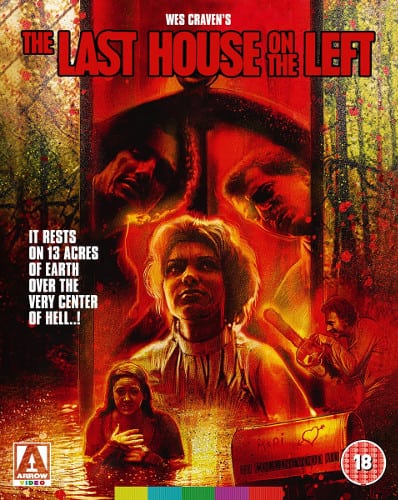
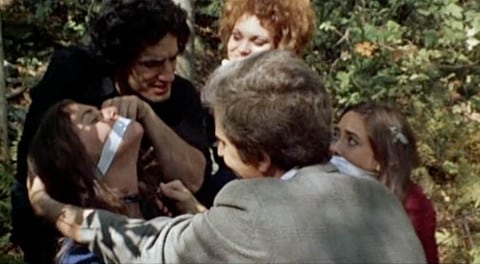
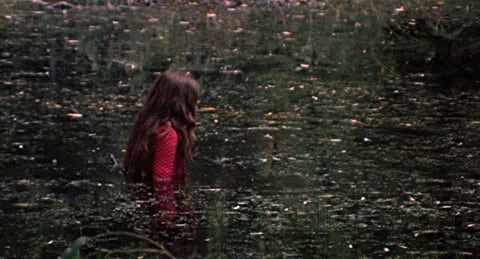

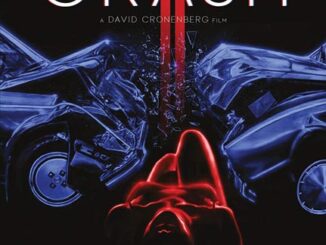

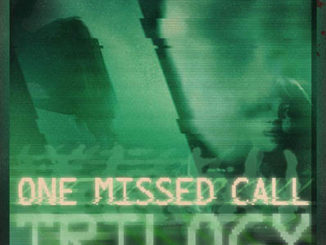
I really enjoyed the extra on this disc with David Hess. I was mesmerized by that guy. It was so odd to listen to him talk. I would absolutely hate to have known him but couldn’t stop watching him talk. Also, the movie would not have been the same animal without his bonkers soundtrack.